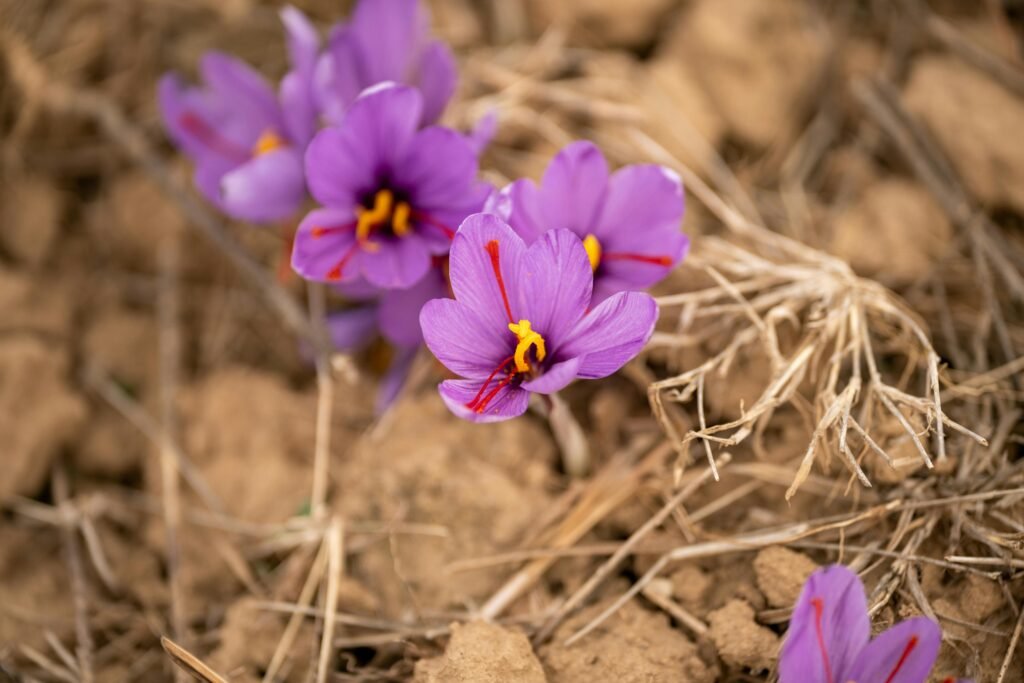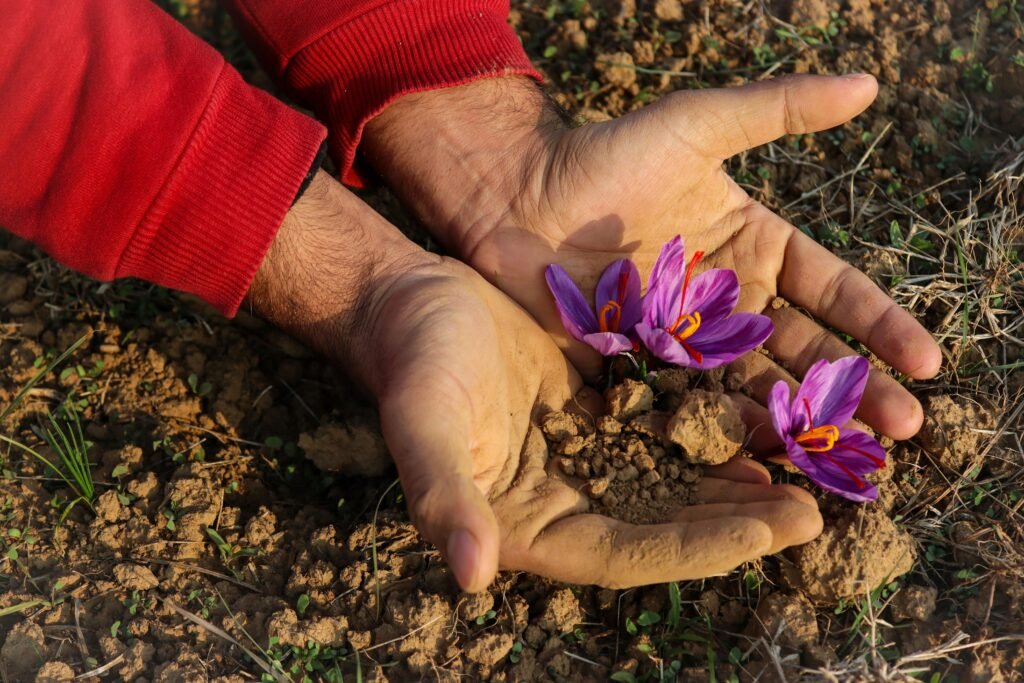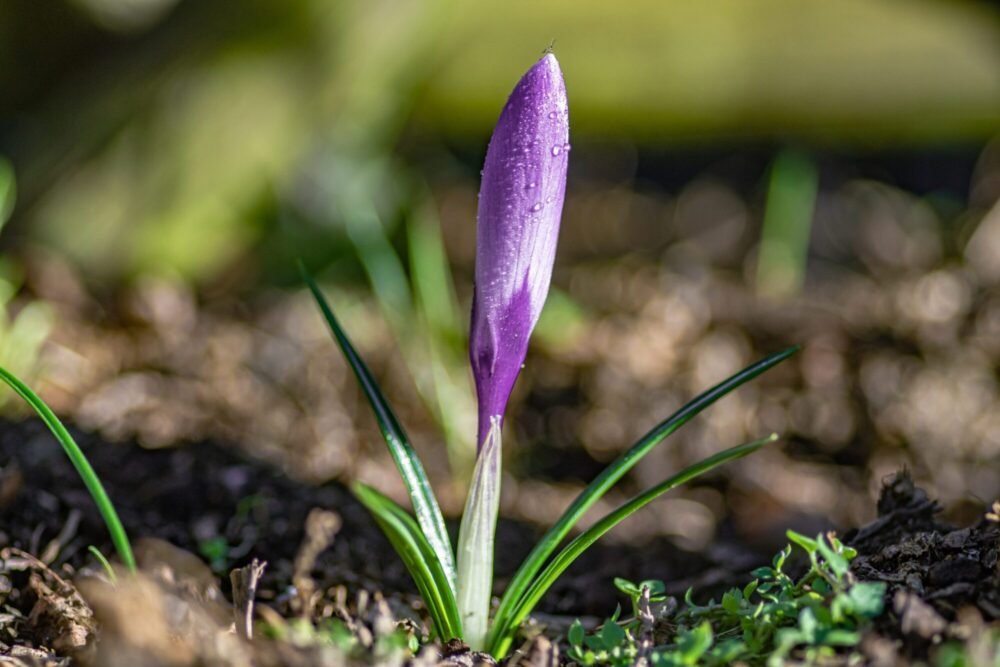What Does Saffron Taste Like?
You most likely associate the word saffron with luxury, exotic cuisine, and possibly even a hefty price tag. However, what is the taste of saffron? Why is it so costly and so unique? We’re going to cover all you need to know about this enchanted spice today, from how to grow it yourself to its taste.
What is Saffron?

The Crocus sativus flower, sometimes known as the saffron crocus, is the source of saffron. You know, those little bright red threads you find in spice jars? In reality, they are the flower’s dried stigmas, often known as saffron threads. Only three threads are produced by each blossom, making harvesting them a very delicate task! Because of this, genuine saffron is uncommon and highly valued worldwide.
What Does Saffron Taste Like?
What precisely does saffron taste like, then?
Due to its uniqueness, the saffron flavor is complex and difficult to define. Imagine a scent that is simultaneously floral and earthy, with a touch of sweetness and honey. Some even hear a background note that sounds like hay or grass.
Saffron produces a rich, warm scent and a rich, golden hue that is as pleasing to the eyes as it is to the taste buds when it is cooked into meals like saffron rice or added to curries in saffron Indian cuisine.
Saffron Benefits You Should Know About
Saffron has many health advantages in addition to its amazing flavor. These are some potent saffron Benefits :
- Mood-Boosting: According to numerous studies, saffron may help elevate mood and combat the signs of anxiety and sadness.
- Packed with Antioxidants: Crocin, picrocrocin, and safranal, which are found in saffron, are antioxidants that save your cells from oxidative damage.
- Promotes Heart Health: Studies indicate that saffron may help reduce blood pressure and raise cholesterol.
- Natural Anti-Inflammatory: Compounds in saffron may enhance general wellbeing by lowering inflammation in the body.
Is Saffron an Edible Plant?

Absolutely!
Only the bright red saffron threads are utilized in cooking, despite the fact that the saffron crocus (Crocus sativus) is an edible plant. Usually, no one eats the remaining parts of the plant, such as the leaves and petals. The charm (and flavor) is all in those golden saffron threads!
Why is Saffron So Expensive?
You’ve probably noticed that real saffron can be surprisingly expensive if you’ve ever gone shopping for it. But that’s for a good purpose!
- Every year, each crocus flower only blossoms for a few days.
- Workers meticulously pluck the small stigmas during the harvesting process, which is done entirely by hand.
- A single pound of saffron spice requires over 75,000 blossoms!
How to Grow Saffron at Home

Are you interested in cultivating your own saffron threads? With the correct circumstances, anything is feasible!
This is a basic guide to saffron cultivation:
- Climate: Regions with hot, dry summers and chilly winters are ideal for saffron growth.
- Planting: In late summer or early fall, get healthy saffron corms and plant them in soil that drains properly.
- Care: Water carefully since saffron dislikes wet soil.
- Harvesting: In the fall, flowers bloom. Remove the red threads gently after picking the blooms in the morning.
Cooking with Saffron: A Little Goes a Long Way
Remember that a small pinch of saffron can flavor an entire dish if you’re ready to use it in your cooking. To enhance its vibrant color and fragrant scent:
- For ten to fifteen minutes, steep the threads in a few teaspoons of heated milk, broth, or water.
- To disperse the saffron flavor throughout your dish, add the infusion.
Typical recipes that call for saffron include:
- Customary saffron rice
- Persian stews
- The French shellfish soup known as “bouillabaisse”
- Indian kheer and biryani
- Paella in Spanish
Final Thoughts
So, what does saffron taste like? It’s a tasty, delicate, flowery, and somewhat sweet spice that elevates everyday meals to fine dining. Beyond its opulent taste, saffron adds decades of culinary history and health advantages.
Saffron is worth every golden thread, whether you’re using it in saffron Indian cooking, making a batch of aromatic saffron rice, or trying out new dishes.
Yes, it is expensive, but you will see why people all over the world value this priceless spice after you experience the wonder of genuine saffron.





